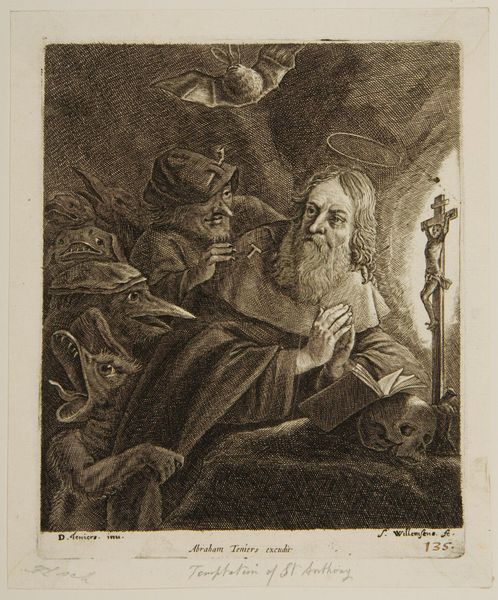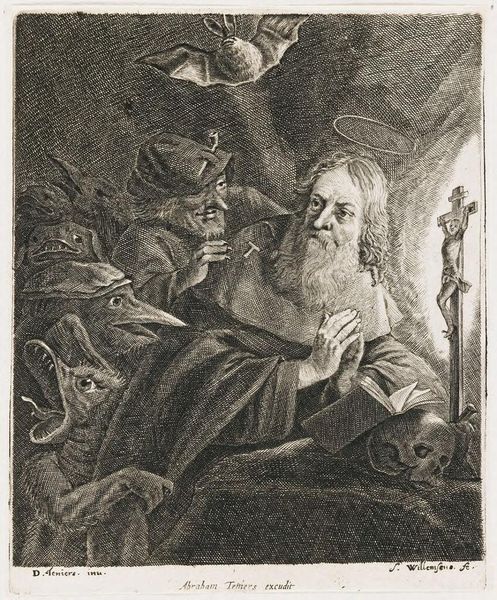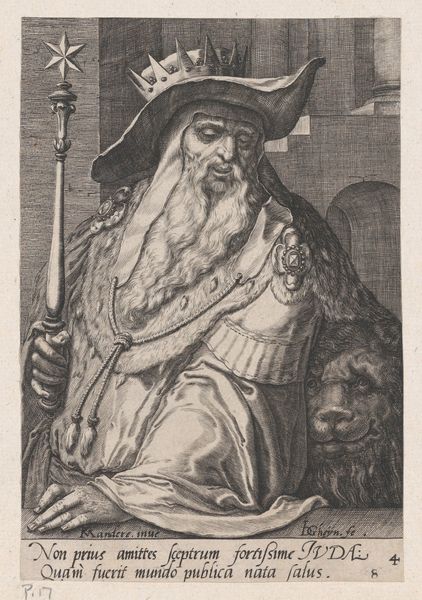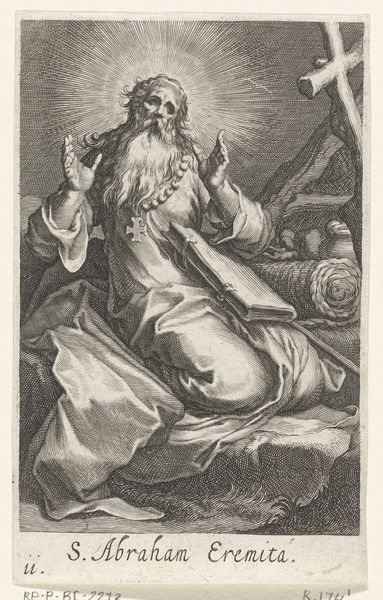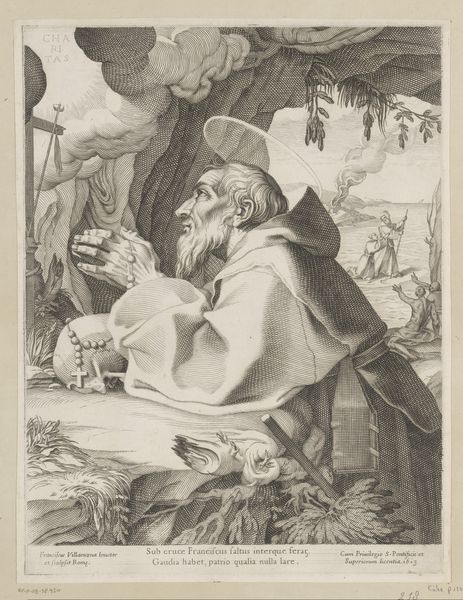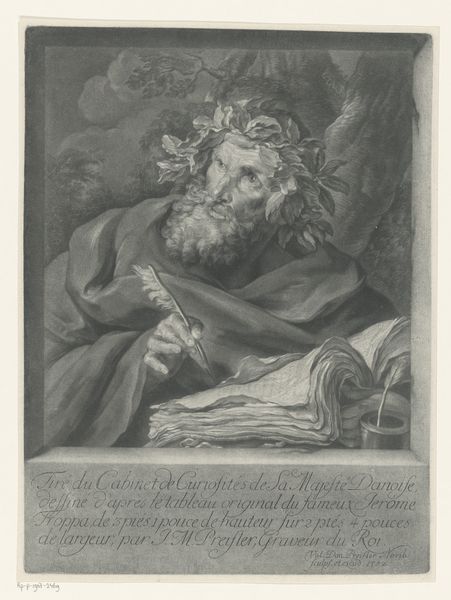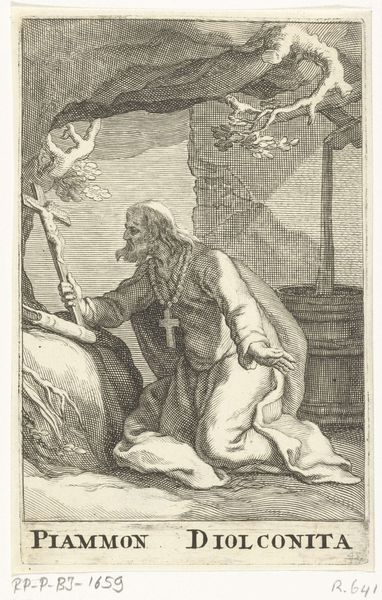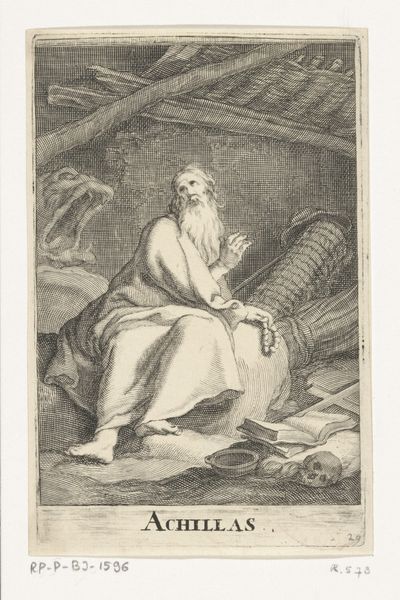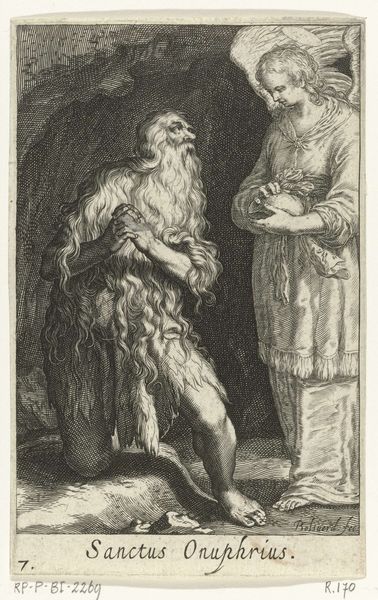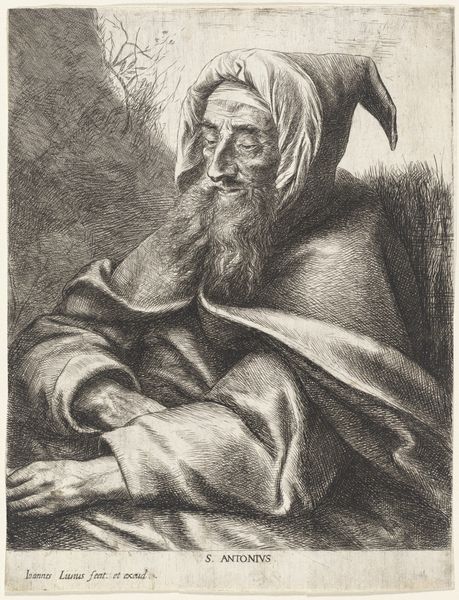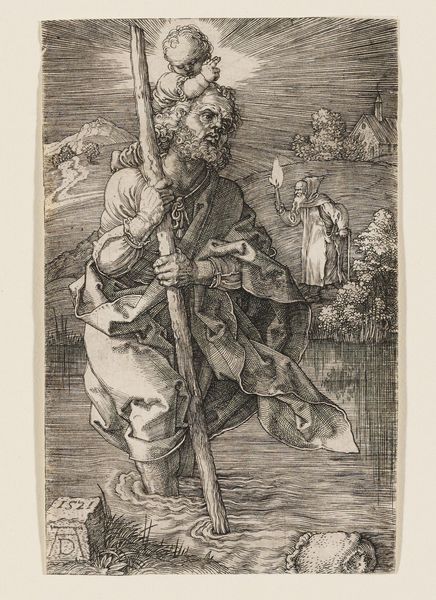
print, etching
#
allegory
#
narrative-art
#
baroque
# print
#
etching
#
figuration
#
chiaroscuro
#
history-painting
Dimensions: height 173 mm, width 142 mm
Copyright: Rijks Museum: Open Domain
Curator: This etching, "The Temptation of Saint Anthony" by Sidrach Willemsens, created sometime between 1640 and 1651, plunges us into a swirling drama. What’s your first take on it? Editor: I’m immediately struck by the density, that almost oppressive accumulation of detail. The contrast of dark, cross-hatched lines and sparse highlights creates a kind of visual claustrophobia, forcing the eye to dart nervously around the composition. Curator: Willemsens masterfully employs chiaroscuro, that dramatic interplay of light and shadow, which was very common in baroque prints. Saint Anthony is shown beset by demonic figures. The imagery speaks to deeper struggles with faith and morality, wouldn’t you agree? Editor: Absolutely. And observe the dynamism inherent in the composition: a vortex almost, spiraling from the saint toward these grotesque figures and up to the bat. There's tension between the almost luminous depiction of the saint with his halo, in opposition to the sinister faces and shadows lurking on the periphery. Curator: Note how those surrounding grotesque figures resemble folk demons, figures born from communal nightmares—all manifestations of internal conflict projected outward, an old and pervasive archetype in Western culture. Editor: Interesting, because I'm fixated on the technical execution. The sheer intricacy of the etching—the delicate lines defining each demon's sneer, the textured shadows, not to mention the precision needed to create such detail—it’s astounding. I am almost tempted to look away but my eye can’t help to explore the visual contrasts: the smoothness of the saint versus the exaggerated texture of the demons. Curator: The halo itself is not merely decorative but symbolically loads the composition, declaring visually the ultimate triumph of divine light and spiritual steadfastness. The crucifix at the opposite side confirms the iconography as a statement. It’s not only the test but the proven resilience. Editor: Still, that single light source creates a disturbing stage effect on Saint Anthony; that crucifix barely casts a shadow on his face…It might hint at some doubt that haunts him. But that level of interpretation depends entirely on whether you can look beyond the surface aesthetics. Curator: Very valid. So ultimately, is it the intricate, almost frenetic, detail, or the larger symbolic narrative that truly holds our attention, do you think? Editor: I'd say it's inseparably both. The masterful application of baroque style strengthens the power of a narrative archetype to make an enduring impact, artistically as well as emotionally.
Comments
No comments
Be the first to comment and join the conversation on the ultimate creative platform.
